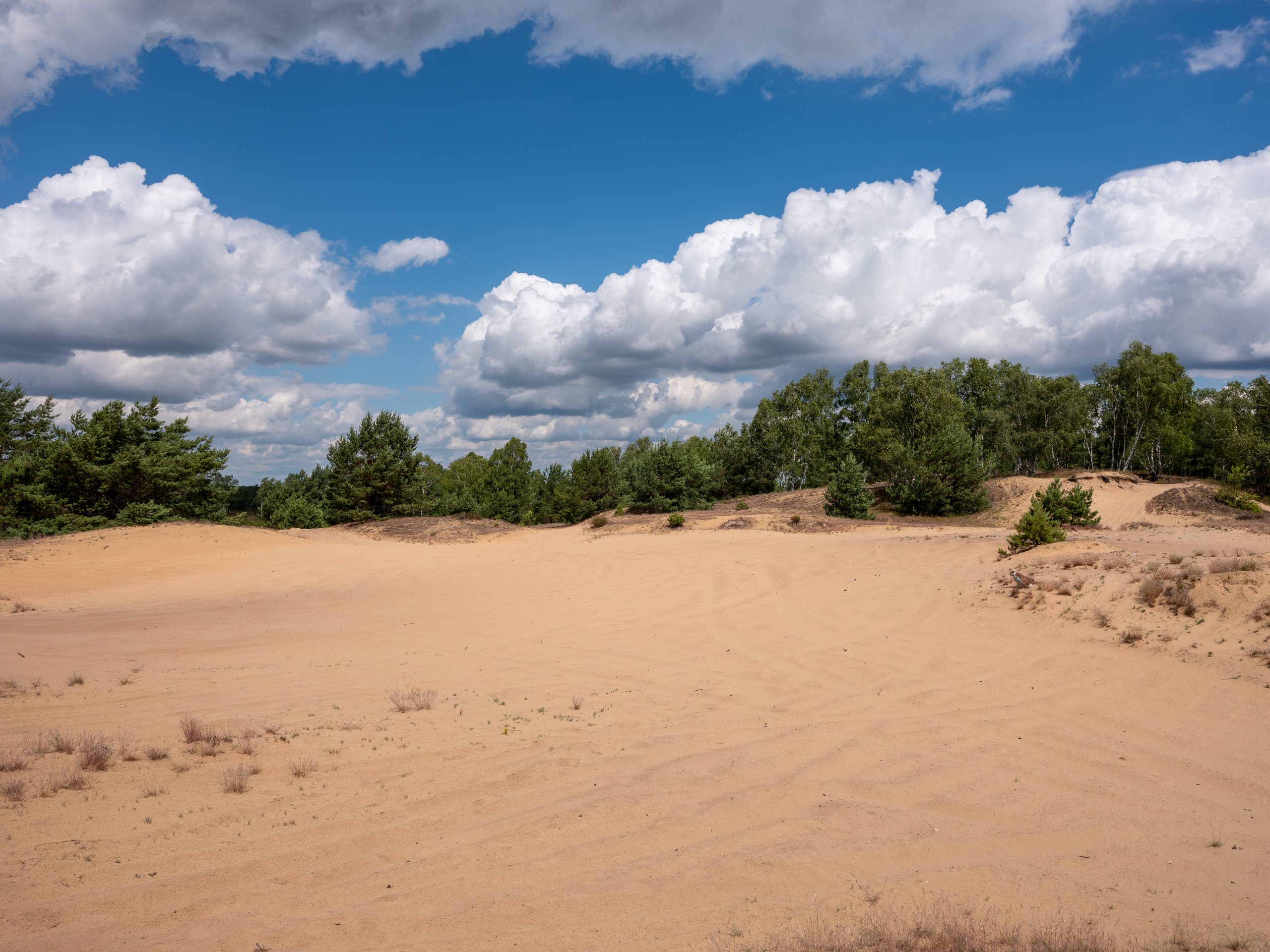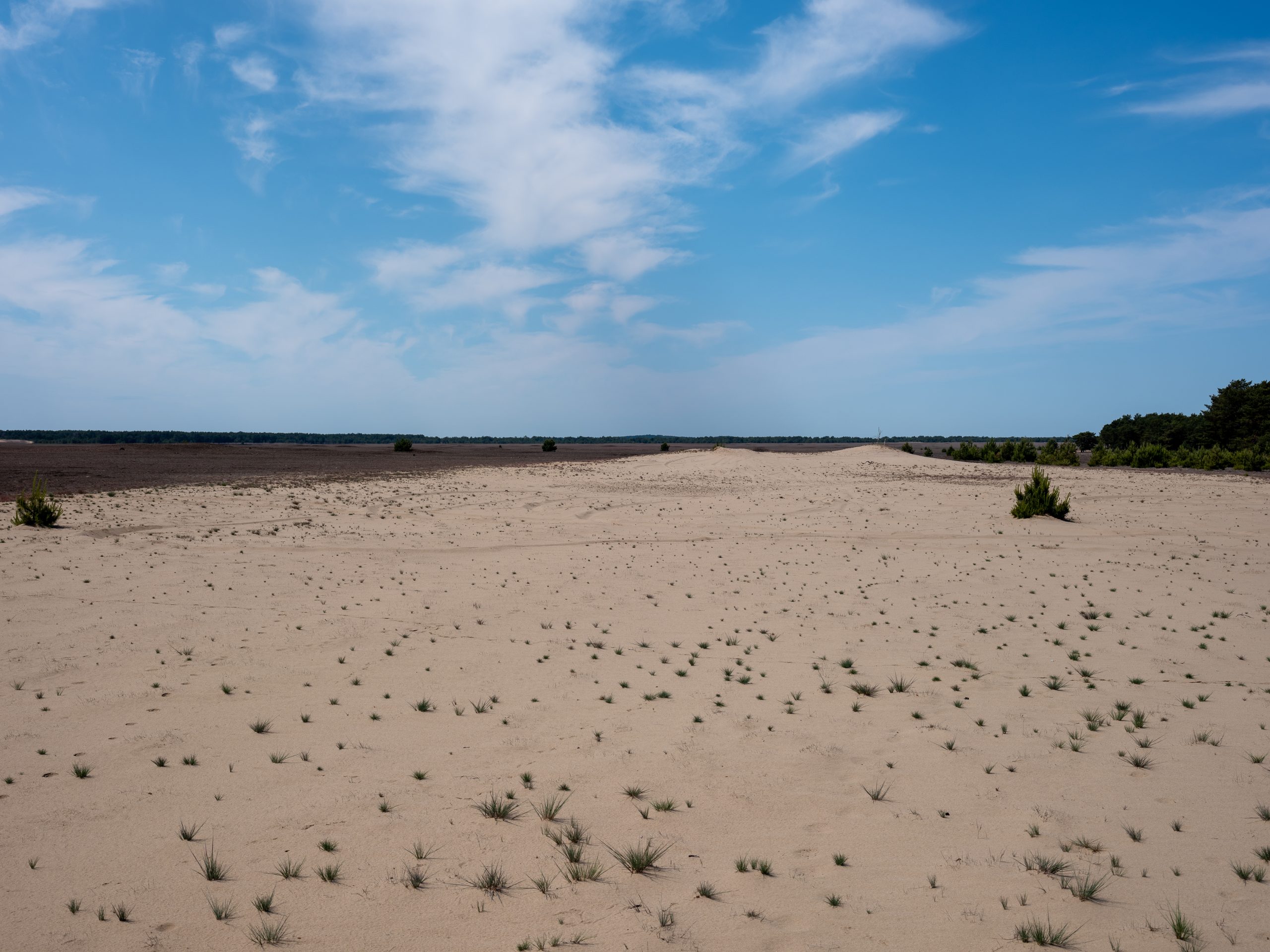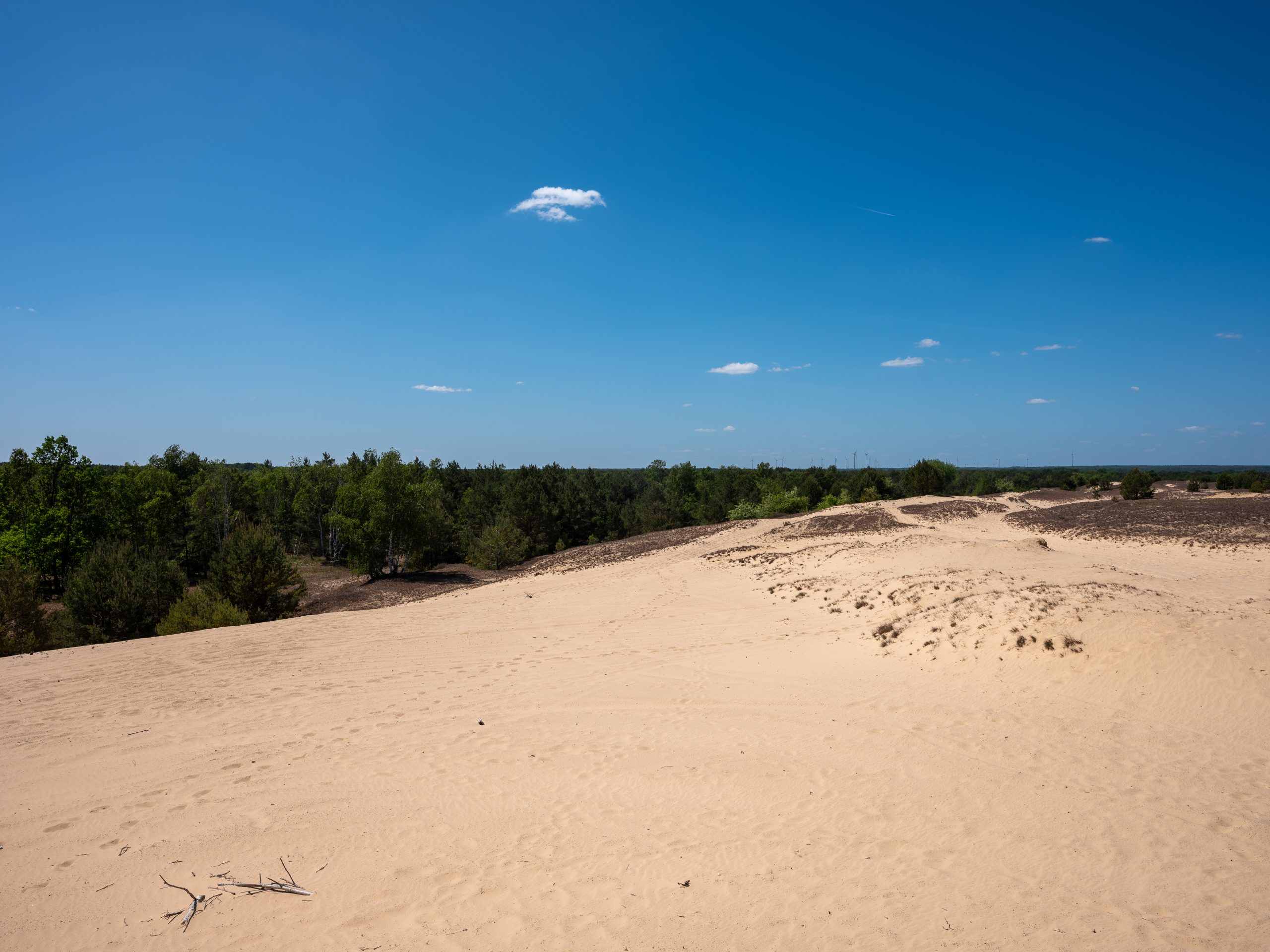Info: Photo series of 8 images; archival pigment print; framed; 82.5 x 110 cm
Text: Two Unequal Winds features a series of landscape photographs captured in military training areas across Germany. This work examines why the military, both past and present, has occupied these particular landscapes for their operations, raising the question: what role does sand play in the imagination of exercising force and projecting conflict?
I searched for sand in Germany, my adopted home. I identify with the desert landscape, having grown up in West Asia. But I didn’t expect to find anything here.
I discovered dunes that were relics of the Ice Age, formed by the movement of glaciers and then carried by rivers and deposited. Other dunes were revealed after forest wildfires.
These relatively numerous but small, and unexpected areas of sandy ecologies in Germany, need to be protected from the creeping dominant vegetation to create a haven for the endemic flora and fauna that thrive there.
Then I learned that these areas all have a history of military activity, some spanning centuries. This includes the Prussian Army, Austrian Army, French Army, Wehrmacht, National People’s Army, Belgian Army, Netherlands Army, The Red Army, German Army, British Army, and the US Army.
Our reading of landscapes reveals the narratives that we have embedded within them. Desert landscapes around the globe have been subject to imperialist thought under the false premise that they are empty spaces, leading to violent occupation. Can we demilitarise our imagination of sand and its landscapes?
The title Two Unequal Winds refers to art historian Michael Baxandall’s description of the formation of the ‘seif’ (Arabic for sword) type dune. In his Episodes Memorybook, he reflects on the characteristics of dunes and their analogies to the properties of human consciousness.
“A virtue of the sand dune as emblem is that it acknowledges the active presence of the past – in the lamination – while allowing the deferment of particular complexities of the idea of human memory.”
Please note: Some of these photographs were taken in restricted zones where the ground is still loaded with weapons and live ammunition and is at risk of exploding. These areas are not open to the general public. Special permission was obtained to enter these areas.
This work has been generously supported by:

Special thanks:










